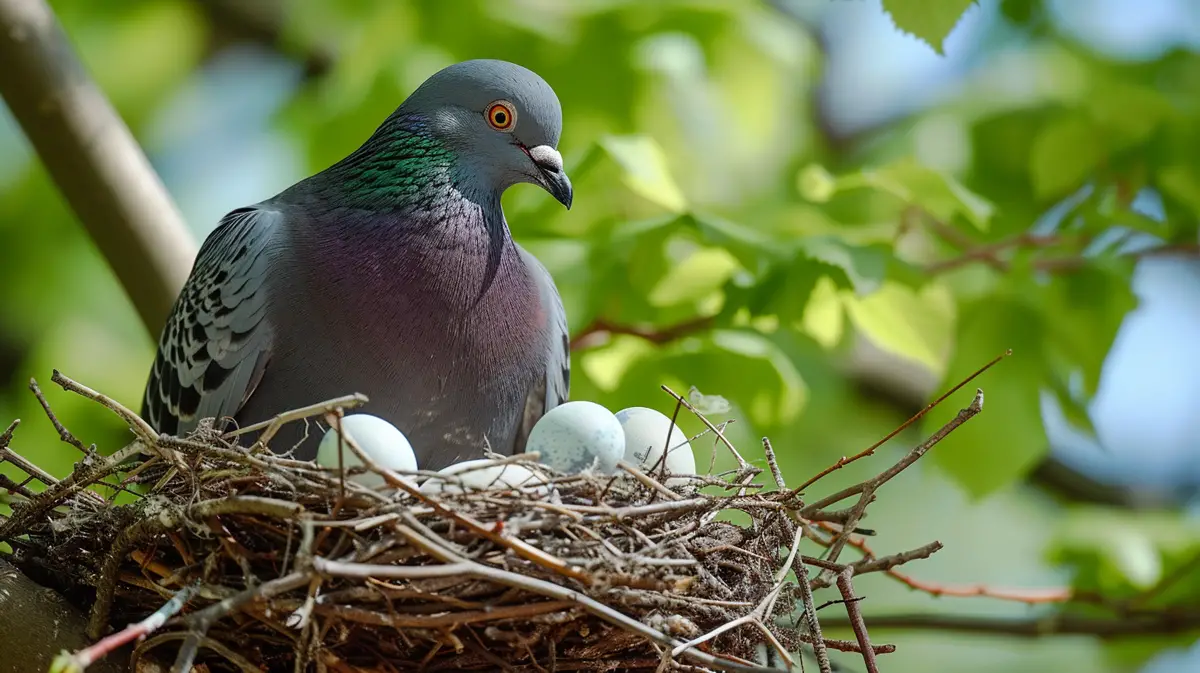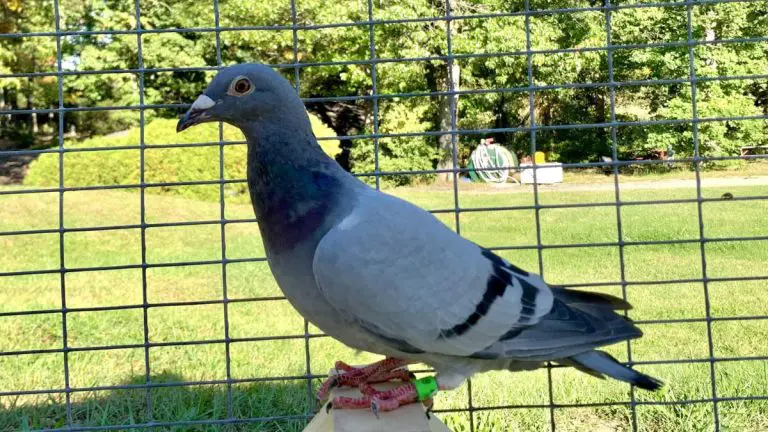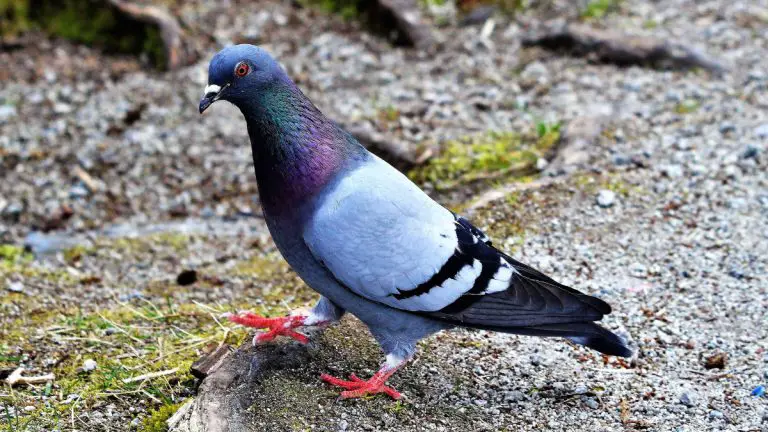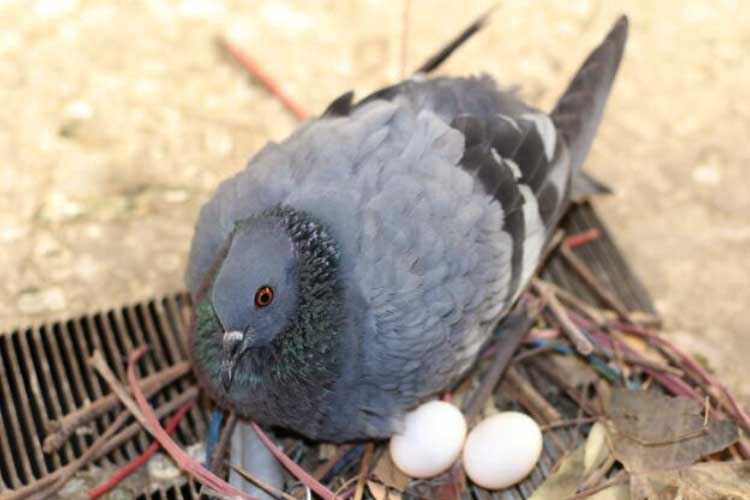Pigeon Nest Removal: Tips and Professional Services
Are you tired of dealing with pesky pigeons nesting on your property? Well, you’re not alone. Pigeons can be a nuisance, causing damage to buildings and leaving behind a mess of droppings. But fear not, because I am here to share my expertise on pigeon nest removal. In this article, I’ll guide you through the process of safely and effectively getting rid of pigeon nests, ensuring that your property remains clean and free from these unwanted guests. So, let’s dive in and learn how to bid farewell to those bothersome pigeons once and for all.
Why Pigeon Nests are a Problem
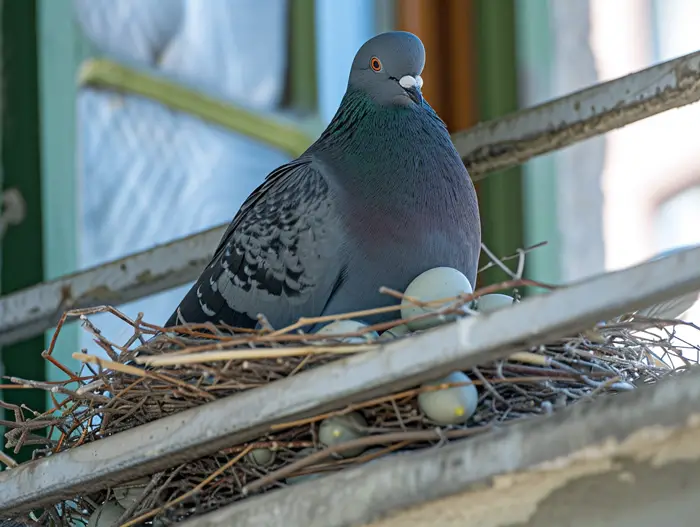
Pigeon nests can be a nuisance when they are built on your property. As someone who has dealt with this issue, I understand the frustration they can cause. Here are a few reasons why pigeon nests are something you’ll want to address:
- Damage to Property: Pigeons are known for their habit of building nests in awkward and inconvenient places. These nests can cause damage to structures such as roofs, balconies, and air conditioning units. The accumulation of droppings and nesting materials can also clog gutters and drainage systems, leading to further property damage.
- Health Hazards: Pigeon droppings pose serious health risks. They can contain various pathogens and bacteria, including histoplasmosis, cryptococcosis, and salmonella. When dry, the droppings can turn into dust, which can be inhaled and lead to respiratory problems. Additionally, the presence of pigeons can attract other pests and insects, further increasing the risk of disease transmission.
- Mess and Odor: Pigeon nests are not only unsightly, they also create a mess. The droppings, feathers, and nesting materials can clutter your property, making it look unkempt. Moreover, the accumulation of droppings can create an unpleasant odor that lingers in the air, posing an annoyance to you and your neighbors.
- Noise Disturbance: Pigeons are not the quietest of creatures. Their constant cooing and flapping of wings can be irritating, especially if they have nested near doors or windows. This noise disturbance can disrupt your peace and tranquility, affecting your quality of life.
Dealing with pigeon nests promptly is vital to prevent further damage and ensure a clean and pigeon-free property. In the following sections, I will guide you through effective methods of removing pigeon nests and ensuring a safe and peaceful environment.
Remember, addressing the problem early is key to minimizing the impact of pigeon nests on your property. Don’t let these pesky birds cause unnecessary headaches. It’s time to take control and find a solution.
Understanding Pigeon Nesting Behavior
Pigeons are well-known for their ability to build nests in various locations, including rooftops, balconies, and eaves. To effectively address the issue of pigeon nests on our properties, it’s essential to understand their nesting behavior. By gaining insight into why pigeons choose certain areas and how they build their nests, we can develop effective strategies for removal and prevention.
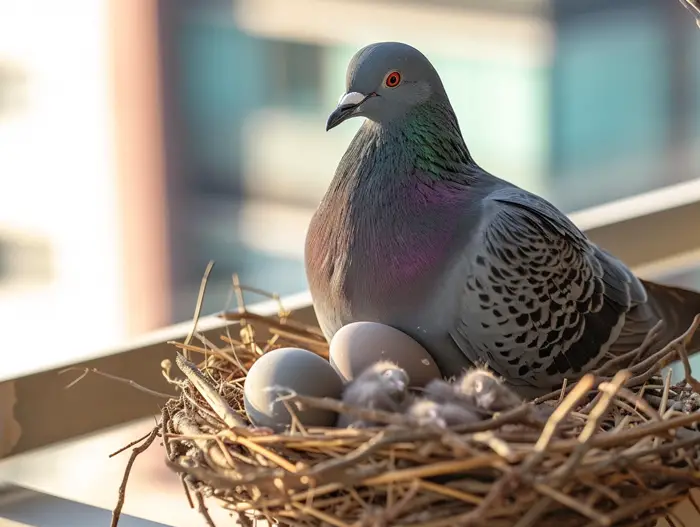
Pigeons are highly adaptable birds, capable of nesting in both urban and rural environments. They are attracted to locations that provide shelter, safety, and access to food. Common nesting spots include:
- Rooftops: Pigeons often choose rooftops as nesting sites due to their elevated position, which provides a good vantage point for observation and protection from ground predators.
- Eaves and ledges: Pigeons prefer narrow ledges and eaves that offer support for their nests. These areas mimic the natural cliff ledges that pigeons would typically use in their natural habitats.
- Balconies and window sills: Pigeons are opportunistic nesters and will utilize any available space that offers protection from the elements.
When it comes to nest-building, pigeons are resourceful and use a variety of materials. Some common nesting materials include twigs, leaves, feathers, and even discarded debris. Pigeons often reuse their nests year after year, adding new materials to reinforce and expand the structure.
Understanding why pigeons choose specific locations and how they build their nests is crucial in devising effective pigeon nest removal strategies. By identifying and addressing the factors that attract pigeons, we can create an environment that is less appealing to them. Several measures can be taken to prevent pigeons from nesting, including:
- Blocking access to nesting sites by installing barriers or netting.
- Regularly removing any nesting materials or debris from potential nesting areas.
- Using visual deterrents such as flash tape or scare balloons to discourage pigeons from landing and building nests.
- Ensuring that food sources are not readily available, as pigeons are attracted to areas with abundant food.
By implementing these preventive measures, we can minimize the chances of pigeons building nests on our properties and create a safer and more enjoyable environment for everyone.
Remember, understanding pigeon nesting behavior is the first step in effectively managing the issue. By taking proactive steps to prevent nesting and remove existing nests, we can maintain a clean, safe, and pigeon-free environment.
Assessing the Scope of the Problem
When it comes to dealing with pigeon nests, understanding the scope of the problem is crucial to effectively address the issue. Assessing the extent of the pigeon nesting activity on a property allows for the implementation of appropriate measures to deter pigeons and prevent future nesting. Let’s dive into how to assess the scope of the problem.
- Visual Inspection: The first step in assessing the scope of the problem is to conduct a thorough visual inspection of the property. Take note of any areas where pigeons are building nests, such as rooftops, eaves, ledges, balconies, and window sills. Look for signs of nesting materials, including twigs, leaves, feathers, and debris.
- Counting Nests: Counting the number of pigeon nests present on the property can provide an estimate of the population and the extent of the nesting problem. Document the locations of each nest to identify hotspots and prioritize areas that require immediate attention.
- Monitoring Activity: Observing the behavior of pigeons can provide valuable insights into the scope of the problem. Pay attention to their activity patterns, such as the number of pigeons present, the frequency of nest building, and the duration of nesting periods. This information can help determine the intensity of the problem and guide the implementation of appropriate control measures.
- Interviewing Witnesses: Speaking with witnesses, such as property owners, tenants, or neighbors, can provide additional information about the scope of the pigeon nesting problem. They may have noticed nesting activity in other areas or have insights into the size of the pigeon population in the vicinity.
By conducting a comprehensive assessment of the scope of the pigeon nesting problem, property owners can develop an effective plan to address the issue. This plan can include measures like installing barriers or netting, regularly removing nesting materials, using visual deterrents, and ensuring food sources are not readily available. Remember, the key to success is understanding the problem at hand and implementing the right solutions.
Legal Considerations for Pigeon Nest Removal

When it comes to removing pigeon nests, there are some important legal considerations that property owners need to keep in mind. Understanding these legal requirements can help ensure that the nest removal process is conducted properly and within the confines of the law. Here are some key points to consider:
1. Local Laws and Regulations: It’s crucial to familiarize yourself with the specific laws and regulations regarding pigeon nest removal in your local area. Different cities and regions may have their own rules and guidelines in place to protect wildlife and avoid unnecessary harm to pigeon populations.
2. Protected Species: Pigeons are generally not considered protected species, but it’s essential to double-check with local authorities or wildlife agencies. In some rare cases, pigeons may be protected due to specific circumstances or nesting locations. Being aware of any protected status will prevent any unintentional violations.
3. Permits and Permissions: Depending on the extent of the pigeon nest removal and the methods employed, you may be required to obtain permits or permission from relevant authorities. Check with your local wildlife or environmental agency to determine if any permits are necessary and how to obtain them.
4. Humane Practices: It is crucial to ensure that any methods used for pigeon nest removal are humane and do not cause unnecessary harm or suffering. Avoid using methods that could injure or kill pigeons, such as trapping or poisoning, as these may be unlawful and inhumane.
5. Pollution and Disposal Considerations: Properly disposing of nest materials and waste is essential to avoid pollution and maintain a hygienic environment. Be mindful of local waste management regulations and guidelines for disposing of pigeon nest debris, feathers, and droppings.
By being aware of these legal considerations, property owners can navigate the process of pigeon nest removal in a responsible and compliant manner. It is always advisable to seek guidance from local authorities or wildlife agencies to ensure that every step is taken lawfully and with the welfare of the pigeons in mind. Remember, a thorough understanding of the legal requirements will help create a safe and sustainable solution for both property owners and pigeons.
Tools and Equipment for Pigeon Nest Removal
When it comes to removing pigeon nests, having the right tools and equipment is essential. Here are some of the key items you’ll need to effectively tackle the task:
- Protective Gear: It’s important to prioritize safety when dealing with pigeon nests. Wear protective clothing, including gloves, goggles, and a mask, to safeguard against potential health risks.
- Ladders or Scaffolding: Pigeon nests are often found in high or hard-to-reach places. Having a sturdy ladder or scaffolding will help you access these areas safely.
- Nest Removal Tools: You’ll need tools specifically designed for removing nests, such as a long-handled brush or scraper. These tools will allow you to dislodge and remove nests without causing damage to the structure or harming the birds.
- Cleaning Supplies: After removing the nests, you’ll want to clean and disinfect the area thoroughly to prevent the spread of diseases. Keep cleaning supplies such as bleach, disinfectant, and trash bags handy.
- Pigeon Deterrents: To discourage pigeons from returning to the area, consider using pigeon deterrents. These can include bird spikes, netting, or ultrasonic repellents. Consult with a professional to determine the best deterrent for your specific situation.
Remember, if you’re uncertain about using certain tools or equipment, it’s always advisable to seek professional assistance. Safety should be your top priority when dealing with bird nests and potential hazards associated with their removal.
By being well-prepared with the right tools and equipment, you can tackle pigeon nest removal effectively and efficiently.

Step-by-Step Guide to Pigeon Nest Removal
When it comes to removing pigeon nests, following a step-by-step approach is important to ensure effectiveness and safety. Here’s a guide to help you through the process:
1. Visual Inspection
I begin by conducting a thorough visual inspection of the affected area. I carefully examine the nooks, ledges, and other areas where pigeons tend to build their nests. This allows me to identify the extent of the infestation and determine the appropriate course of action.
2. Nest Counting
Next, I count the number of nests present in the area. Keeping track of the nest count provides valuable data for assessing the severity of the problem. It allows me to measure the progress and effectiveness of the removal process.
3. Pigeon Activity Monitoring
I closely monitor pigeon activity in the vicinity. Taking note of their behavior patterns helps me understand their preferred nesting spots and aids in developing effective prevention strategies. This step is crucial in ensuring long-term success in deterring pigeons from returning.
4. Witness Interviews
I interview any witnesses or occupants of the affected property to gather information on the extent of the pigeon nesting problem. This additional input can provide valuable insights and help determine the best approach for removal.
5. Removal Techniques and Tools
I employ various techniques and use appropriate tools for pigeon nest removal. This includes the use of ladders or scaffolding to reach higher areas, specialized nest removal tools to minimize damage, and cleaning supplies to ensure proper sanitation. Additionally, employing pigeon deterrents can effectively discourage pigeons from nesting in the same area again.
6. Safety First
Throughout the entire process, ensuring safety is a top priority. I equip myself with the necessary protective gear, such as gloves, goggles, and masks, to protect against potential health hazards. If I am unsure about using certain tools or equipment, I seek professional assistance to avoid accidents.
Remember, removing pigeon nests requires a systematic approach to address the problem effectively. By following these steps, you can minimize the impact of pigeon infestation and maintain a clean and safe environment.
That being said, always consult with local authorities and professionals to ensure compliance with any legal considerations specific to your area.
Preventing Future Pigeon Nesting
As I mentioned earlier, preventing future pigeon nesting is crucial to effectively manage the issue. By taking proactive measures, we can avoid the recurrence of pigeon nests and minimize the potential damage they can cause. Here are some steps you can take to prevent pigeons from nesting in the future:
- Remove Access Points: Identify and seal off any openings or holes in your building that pigeons can use to access nesting sites. This may involve fixing broken windows, gaps in walls, or damaged vents. By eliminating these entry points, you can greatly reduce the likelihood of pigeons choosing your property for nesting.
- Eliminate Food Sources: Pigeons are attracted to areas with easy access to food. Take preventive measures such as properly storing trash in sealed containers, regularly cleaning outdoor eating areas, and ensuring that food is not left accessible to pigeons. By removing their food source, you make your property less appealing to these birds.
- Install Deterrents: Implement the use of deterrents such as spikes, nets, or wires to prevent pigeons from roosting and nesting on ledges, roofs, or other preferred areas. These physical barriers create an unfavorable environment, discouraging pigeons from settling and nesting on your property.
- Maintain Regular Cleaning: Regularly clean your property, including rooftops, gutters, and outdoor spaces. Pigeon droppings can accumulate and pose health and safety risks. By keeping your property clean, you not only deter pigeons but also ensure a healthy and hygienic environment.
- Consider Scare Tactics: Utilize scare tactics, such as motion-activated noise devices or predator decoys, to deter pigeons from nesting. These methods disrupt their comfort zone and make them think twice about choosing your property as a nesting site.
Remember, preventing future pigeon nesting requires consistent effort and monitoring. By implementing these preventive measures, you can create an inhospitable environment for pigeons and effectively manage the issue.
In the next section, I will discuss the importance of seeking professional assistance for pigeon nest removal and the legal considerations that should be taken into account.
Professional Pigeon Nest Removal Services
When it comes to dealing with pigeon nests, sometimes it’s best to leave it to the professionals. Professional pigeon nest removal services offer expertise and specialized knowledge to handle the task effectively and efficiently. Here’s why you should consider hiring professionals for pigeon nest removal:
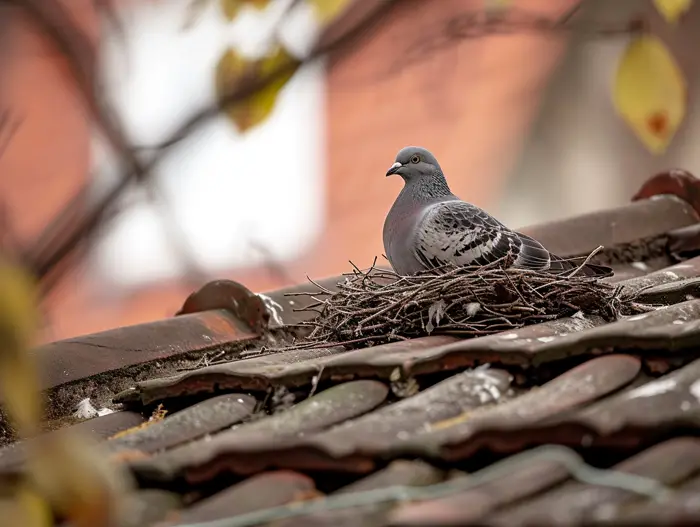
- Expertise and Experience: Professional pigeon nest removal services have years of experience dealing with pigeon infestations. They are equipped with the knowledge and skills to identify access points, safely remove nests, and prevent future nesting. Their expertise ensures that the job is done right the first time.
- Safety: Removing pigeon nests can be risky, especially if they are located in high or hard-to-reach areas. Professionals have the necessary safety equipment and procedures to handle the job without endangering themselves or others. Hiring professionals minimizes the risk of accidents and injuries.
- Humane Practices: Professional pigeon nest removal services prioritize humane methods to deal with pigeons. They use deterrents and exclusion techniques that discourage pigeons from nesting without causing harm. This ensures that the pigeons are not harmed or injured during the nest removal process.
- Legal Considerations: Pigeons are protected by laws in many areas, and it is important to comply with these regulations when dealing with them. Professional pigeon nest removal services are knowledgeable about local laws and regulations regarding pigeon control. They can advise you on the proper procedures to follow and ensure that you’re in compliance with the law.
- Time and Effort Savings: Removing pigeon nests can be time-consuming and physically demanding. By hiring professionals, you can save yourself the hassle and effort of doing it yourself. They have the tools, resources, and manpower to handle the job efficiently, allowing you to focus on other tasks.
Remember, prevention is key to keeping pigeons away. Hiring professional pigeon nest removal services not only helps you remove existing nests but also provides valuable insights and recommendations for preventing future infestations. Their expertise and proactive approach ensure that your property remains pigeon-free for the long term.
So, if you’re dealing with a pigeon nest problem, consider reaching out to professional pigeon nest removal services. Let the experts take care of the task while you enjoy peace of mind knowing that your property is pigeon-free.
Conclusion
In this article, I have provided you with a comprehensive guide to pigeon nest removal. By following the step-by-step instructions and implementing the suggested preventive measures, you can effectively address the issue of pigeon nesting on your property.
I have also highlighted the benefits of hiring professional pigeon nest removal services. Their expertise, experience, and knowledge of legal considerations ensure a safe and humane approach to pigeon control. Additionally, their ability to provide recommendations for preventing future infestations can save you time and effort in the long run.
Remember, it is crucial to take action promptly to prevent further damage caused by pigeons nesting on your property. By reaching out to professional services, you can ensure effective and long-term pigeon control.
I hope this article has provided you with valuable insights and practical solutions for dealing with pigeon nests. Don’t hesitate to take the necessary steps to protect your property and maintain a clean and safe environment.
